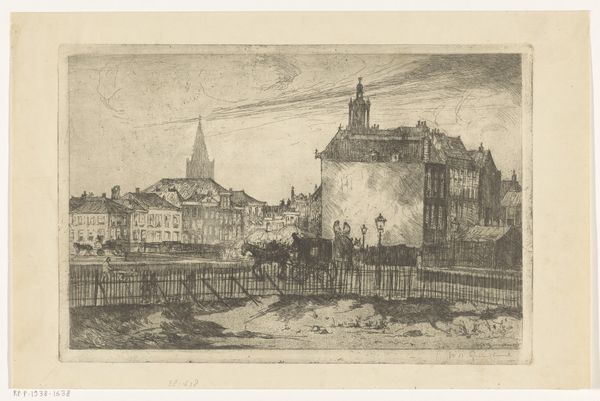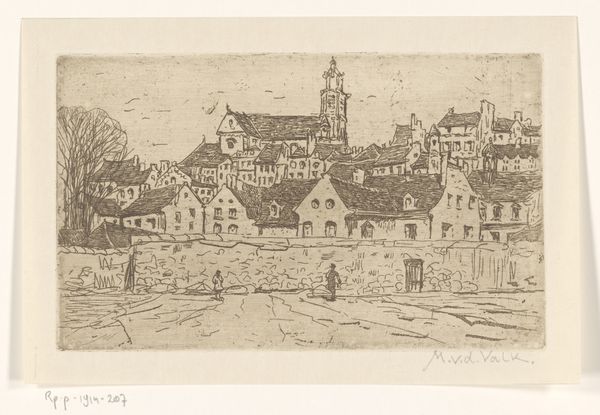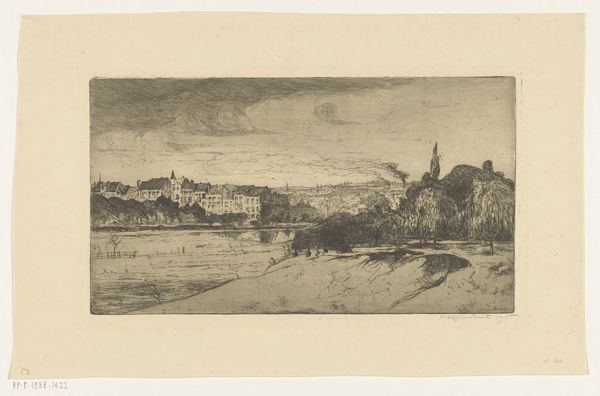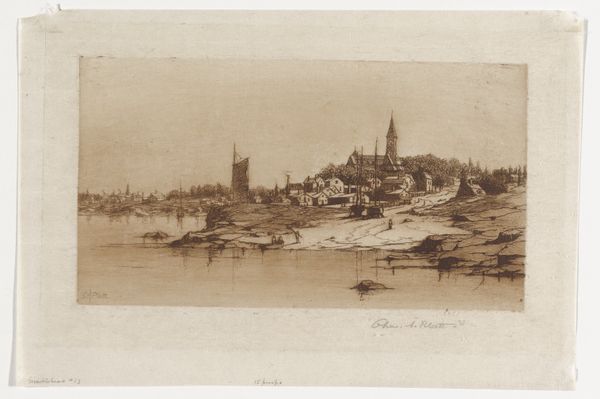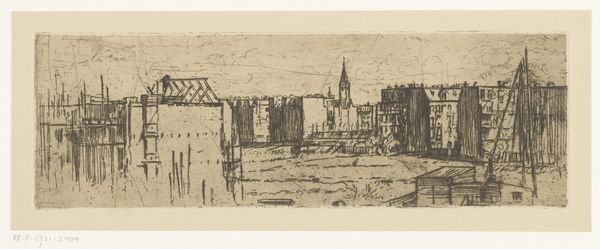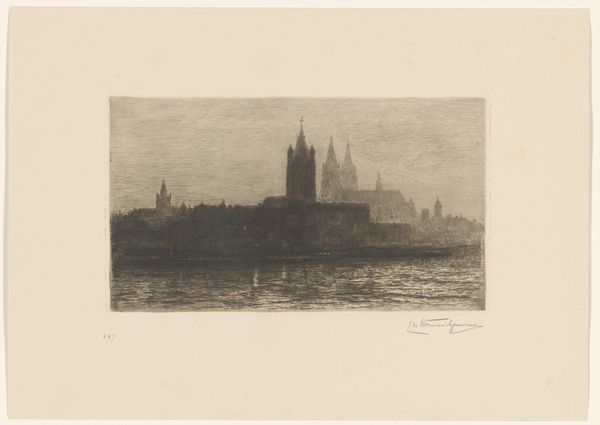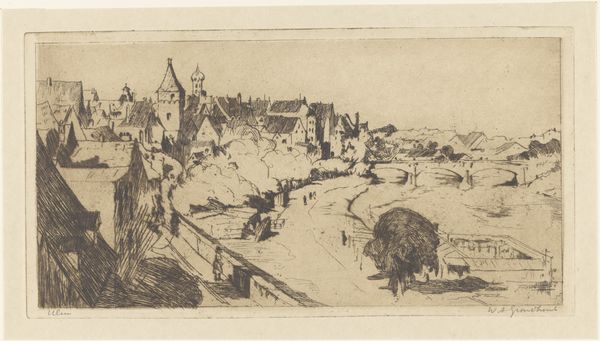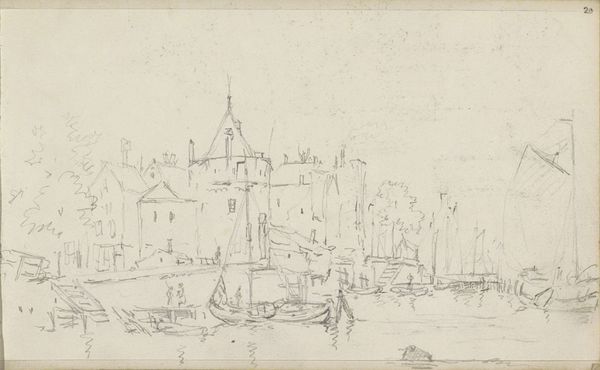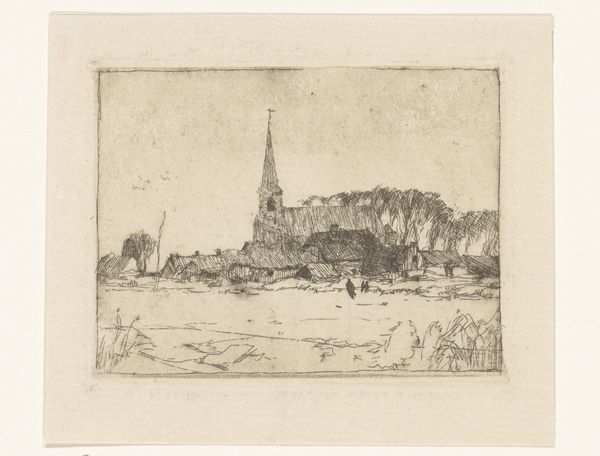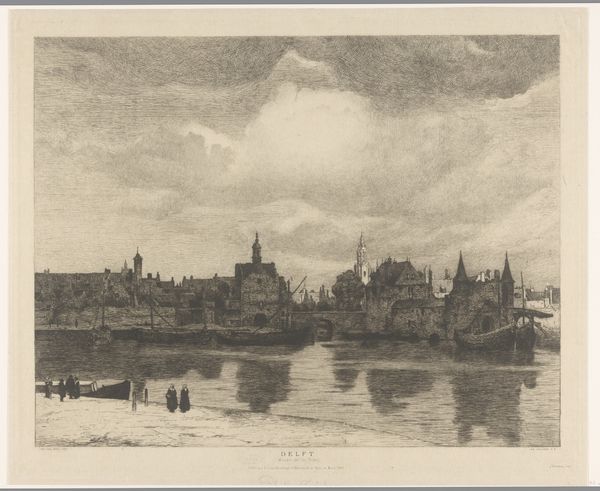
graphic-art, print, etching
#
graphic-art
#
dutch-golden-age
# print
#
etching
#
old engraving style
#
landscape
Dimensions: height 71 mm, width 165 mm
Copyright: Rijks Museum: Open Domain
Willem Adrianus Grondhout etched this print of Delft. It's made using a metal plate, likely copper, which the artist would have covered with a waxy ground. He then scratched his design through this ground, exposing the metal, before immersing the plate in acid. The acid bites into the exposed lines, creating grooves that hold the ink. This print captures the architectural landscape with delicate lines and subtle tonal variations. Look closely, and you can see the contrast between the static buildings and the presence of working figures. This suggests that the material process of etching can offer insight into the labor required for its production. The choice of a print also speaks volumes. Etchings like this were often made in multiples, intended for a wider audience and a different market than unique paintings. The work challenges our ideas about what is considered art and opens us up to social questions about the role of labor in artistic production and consumption.
Comments
No comments
Be the first to comment and join the conversation on the ultimate creative platform.
